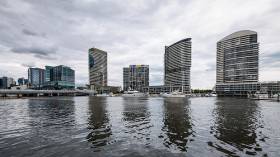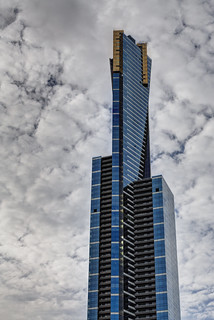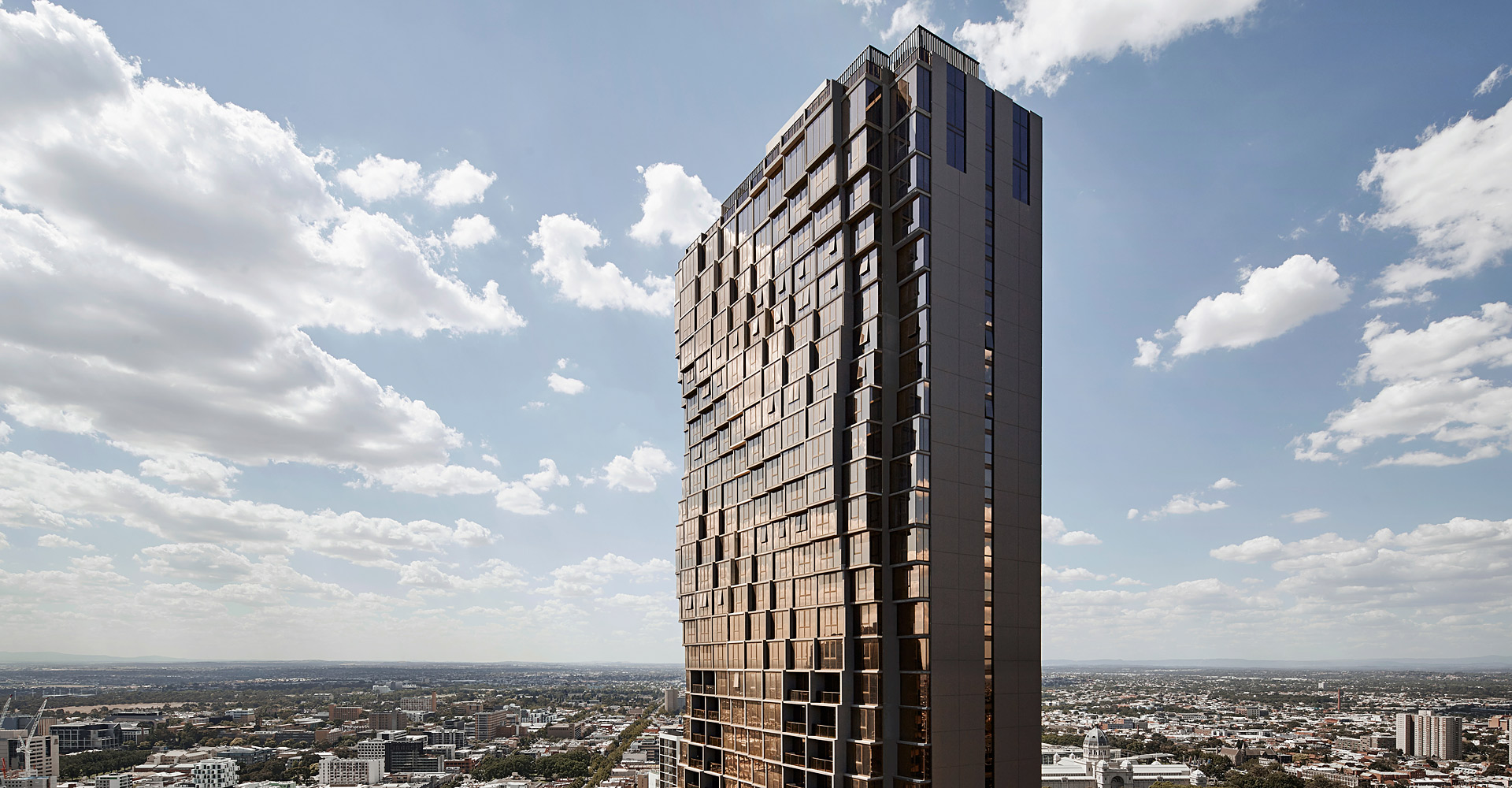
Top Down

Bottom Up





Join our online Wind Engineering Q&A session on Google Hangouts. This will be your chance to talk about wind loads with our Principal Wind Engineer, Dr Seifu Bekele. Our aim is to help engineers and architects understand wind and use it to their advantage in the design process. There will be no agenda, however here are the typical topics we tend to come across with our work:
These discussions allow us to share our current areas of research which we do in partnership with the Monash University. We want to teach more people about wind, so we're offering a Google Hangout session for anyone to call into for free. If you're interested, please fill in the form below and we'll send you the information. Date and time will be determined based on the time zones of people who register. We'll try to pick a time that works for everyone.
The increasing height of tall buildings, accompanied with the use of light materials, means that modern day buildings are becoming more sensitive to wind. These flexible buildings may be subjected to excessive levels of vibration under the action of wind. Excessive levels of vibration adversely affect serviceability and occupants’ comfort in a building. In response to this challenge, to achieve design objectives, there are number of motion control methods suggested and implemented by building designers.
The wind structure interaction is mainly characterized by the along wind and across wind responses. The across wind dynamical responses are initiated by vortex shedding. When wind blows perpendicular to the face of the building, vortices are shed alternately from opposite sides of the building. When a vortex is formed in one side of the building, the wind speed is increased on the other side (which correspond to low pressure). These fluctuating vortices induce fluctuating forces perpendicular to the wind direction. This fluctuating load is responsible for most of the dynamical responses of buildings. Alternating vortices from five different building shapes are shown in Figure 1.
Figure 1 Vortices generated behind a building
The vortex shedding induced lift forces can lead to prohibitively large across wind motions and their mitigation becomes a principal design concern [1]. The following are some of the suggested methods to reduce the dynamic response created by vortex shedding-induced forces.
Building Layouts: Research into vortex induced excitation show that the peak response corresponds to a critical reduced velocity of 10 and above [2]. This reduced velocity is a function of wind speed at roof height (VH), building frequency (f) and building dimension of the small side (L) and is determined by the following equation:
By increasing the building dimension, thereby reducing the aspect ratio of the two sides, it is possible to reduce the vortex induced responses.
Aerodynamic Modification: The organized shedding vortices can be reduced by changing building’s cross-sectional shape. Some of these treatments are chamfered corners [3], building openings [4, 5], tapering, and drop of corners [6]. By using these techniques, considerable reductions of dynamic loads are reported. The tallest building, Burj khalifa utilized this aerodynamic treatment to reduce dynamic wind response effectively [7].
Building Properties: The resonant structural responses of buildings are directly related to building mass, frequency and damping. The damping directly from the building has a limited variability according the type of building (ie. prestressed concrete or steel) and is difficult to predict. However, the building mass and stiffness can be varied to reduce the dynamic response due to vortex shedding. If the building frequency is kept constant and the mass increased, then the predicted building accelerations can be reduced. Similarly, higher frequency also leads to a reduction in the predicted acceleration, as well as predicted dynamic loads.
Misalignment of Excitation and Response Directions: This is based on the idea that vortex shedding induced forces are important only for the wind directions which are approximately normal to the face of a building. Thus, organising the structural system so that its principal axes of stiffness are along the building diagonal is suggested. This leads the generalized forces for these diagonal modes of vibration to become a mixture of drag and lift forces that are more random or broad band in comparison with pure vortex shedding lift forces that results in a narrow band. This arrangement reported by Isyumov [8] resulted in a substantial reduction in the dynamic responses.
Dampers: Recently, using auxiliary dampers to reduce the dynamic responses is becoming more acceptable. Tuned mass, viscous and tuned liquid dampers are commonly used types. The type of damper depends on the available space, budget and level of dynamical reduction desired. Tuned liquid sloshing dampers are becoming more popular due it their ability to be incorporated into the building water reserve. The tuned liquid damper devices achieve a reduction of the dynamic responses by sloshing in water tanks and dissipate energy. Wind tunnel test for 220m residential building resulted with top floor acceleration above the recommended criteria. This high acceleration can be reduced using liquid dampers.
Auxiliary dampers are also used to reduce dynamic loads due to seismic loads. Reducing wind and seismic loads means that less material is required in the construction of the building. Thus, sustainable building design which optimises the structural efficiency uses auxiliary dampers.
Wind tunnel study for structural loads and human comfort study has been in use for decades. The cost of building construction can be reduced substantially by predicting the wind load tailored to the individual building rather than using a general guideline, which leads to conservative load estimations and higher cost or increased risk. The disasters caused by strong winds are minimised due to an increased understanding of wind characteristics, modelling techniques, dedicated wind tunnel studies and the years of experience gained in the field. Advances in the measurement techniques and analysis in wind tunnel testing, as well as in building materials, has opened a door to the construction of taller and more complex buildings and reduce building motion.
To cope with the demand of the present day super high-rise towers in terms of vertical transportation, motion control and sustainable design, researchers and practitioners contribute to the advancement of the knowledge in building construction. The wind tunnel usage, computational fluid dynamics and the related analysis methods are also expected to continue growing to fulfil the future demand. .
References
[1] Davenport, A.G., “The Dependence of Wind Loading on Meteorological Parameters”, In Proc. Int’I Res. Seminar on Wind Effects on Buildings on Structures, University of Toronto Press, 1968
[2] Lin, N., Letchford, C., Tamura, Y., Liang, B., Nakamura, O., “Characteristics of Wind Forces Acting on Tall Buildings” , J. Wind Eng. Ind. Aerodyn. 93, (2005) 217-242
[3] Kwok, K.C.S, “Effect building shape on Wind-Induced Response of Tall Building”, J. Wind Eng. Ind. Aerodyn. 28, (1988) 381-390
[4] Dutton, R. J., and Isyumov, N., “Reduction of Tall Building Motion by Aerodynamic Treatments”, J. Wind Eng. Ind. Aerodyn. 36(1990) 739-747.
[5] Bekele, S., Putten, K.V., “Tall Buildings Base Openings through Size and Shape Relation to Wind Loads and Local Flow Structure”, CTBUH 7th World Congress, New York, 2005
[6] Kareem, A., and Tamura, Y.,” Mitigation of Wind-Induced Motions of Tall Buildings, Tall Building Structures: A World View”, CTBUH, Lehigh University, 1996
[7] Baker, W.F., Korista, D.S., and Novak, L.C., “Engineering the World Tallest – Burj Dubai”, CTBUH 8th World Congress, Dubai, 2008
[8] Isyumov, N., Steckely, A., Amin, N., and Fatehi, H., “Effects of the orientation of the Principal Axis Stiffness on the Dynamic Response of a Slender Square Building”, J. Wind Eng. Ind. Aerodyn. 36, (1990) 769-778

It's as Melbourne as the MCG, meat pies and cold days in summer. It's wind whipping throughDocklands.
When there is even a breath of wind about, Docklands is like one of those cool machines that simulates sky diving. OK, maybe that is a little over the top, but you get what I mean. I understand that it was a windy place prior to development, but I do not think that is an excuse.